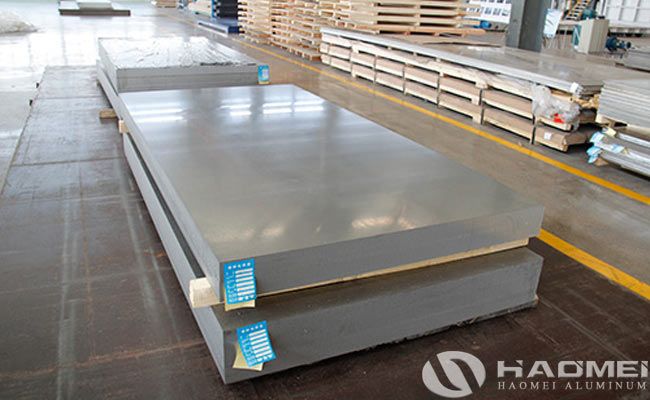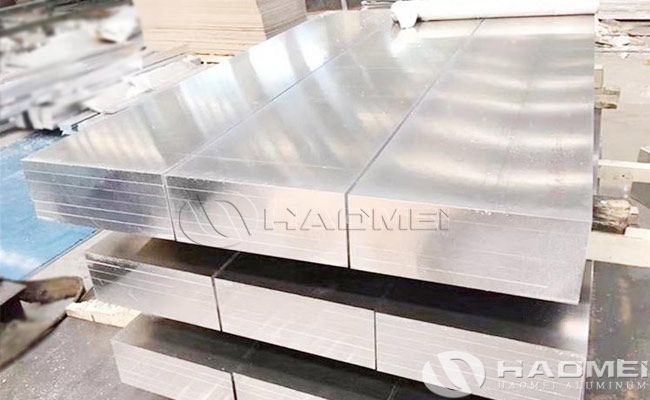
![]() Home > News
Home > News
Source:https://www.aircraft-aluminium.com/a/aluminum-sheet-2024-t3-clad-for-aerospace.html
2024-T3 clad aluminum sheet is a high-strength aluminum alloy material widely used in the aerospace field. Its core advantage lies in the balance of high strength, good plasticity and corrosion resistance.

1. Material properties
2024-T3 belongs to aluminum-copper-magnesium alloy (Al-Cu-Mg), and its main components are:
Copper (Cu) 3.8%-4.9%: core strengthening element, significantly improving tensile strength;
Magnesium (Mg) 1.2%-1.8%: enhancing toughness and fatigue resistance;
Manganese (Mn) 0.3%-0.9%: refining grains and improving corrosion resistance.
Mechanical properties:
Tensile strength ≥425 MPa, yield strength ≥275 MPa, elongation about 12% (1.6mm thickness), hardness HB120;
Density 2.78 g/cm³, can be used stably below 150℃, and high temperature strength is better than 7075 aluminum alloy.
Clad design:
The surface of 2024 aircraft aluminum is coated with a pure aluminum layer (usually 2%-5% of the total thickness), which forms a protective layer through metallurgical bonding and significantly improves corrosion resistance;
In compliance with AMS 4041 standards, the uniformity of the cladding thickness must meet the stringent requirements of aerospace (such as Airbus ASN-A 3012/3442).

Features of aluminum sheet 2024 t3 clad:
- High strength:
2024 T3 aluminum alloy has very high tensile strength and yield strength, suitable for structures that bear high loads.
- Good machinability:
It can be formed and processed by traditional machining methods.
- Corrosion resistance:
Although the corrosion resistance of 2024 aluminum alloy is not as good as some other aluminum alloys (such as 7075 aircraft aluminum), its performance can be improved with appropriate coating or anodizing treatment.
- Lightweight:
The lower density of aluminum alloy helps to reduce the weight of the overall structure.
Aerospace application scenarios of aluminum sheet 2024 t3 clad
- Main load-bearing structural parts:
Wing skin and wing beam: bear aerodynamic loads and bending stresses, and take advantage of their high strength and lightweight characteristics (such as Boeing 737, C919);
Fuselage frame and bulkhead: support the fuselage structure and must meet fatigue resistance and environmental corrosion resistance requirements at the same time.
- Connecting parts:
Rivets and bolts: The good plasticity in the T3 state makes them suitable for cold heading and used for key parts connection;
Landing gear assembly: maintain structural stability under dynamic loads and must pass strict fatigue tests.
- Special environment parts:
Engine compartment structure: withstand short-term high temperature (≤150℃), better than the cost-effectiveness of some nickel-based alloys;
Cryogenic fuel storage tanks: maintain toughness in liquid oxygen/liquid hydrogen environments to avoid embrittlement risks.
Process standards and processing requirements
- Heat treatment specifications:
T3 state: natural aging after solid solution treatment, with both high strength and formability, suitable for complex surface processing (such as wing skin stretch forming);
The cooling rate needs to be strictly controlled (water quenching water temperature < 30℃) to avoid performance degradation due to over-aging.
- Welding process:
Recommended method: friction stir welding (FSW) or laser-MIG hybrid welding can reduce deformation and cracks caused by heat input;
Parameter example: laser power 2.8-3.6 kW, welding speed 24 mm/s, wire spacing 2 mm, with ERCuSi-A welding wire to improve joint strength;
Post-weld treatment: solid solution aging treatment can restore the tensile strength of the joint to more than 85% of the parent material (up to 417 MPa).
- Surface protection:
Anodizing: Generates 5-25μm oxide film, salt spray resistance test exceeds 1000 hours;
Painting process: Polyamide epoxy primer + polyurethane topcoat, anti-ultraviolet and chemical corrosion.
Industry standards and certifications
- International standards: SAE AMS4037R (solution treated plate), AMS4041 (clad plate), covering thickness 0.2-101.6 mm;
- Enterprise standards: Airbus ASN-A 3012 (thin plate), ASN-A 3442 (thick plate), Boeing D6-4124 (aluminum for structural parts);
- Detection requirements: 100% ultrasonic flaw detection (ASTM E1001), surface roughness Ra≤1.6μm, tolerance control ±0.02 mm (precision machined parts).
In short, aluminum sheet 2024 t3 clad has become one of the important materials in the aerospace industry due to its excellent strength and processing performance. When designing and manufacturing aircraft, engineers often consider using this material to meet the requirements of high strength and light weight.